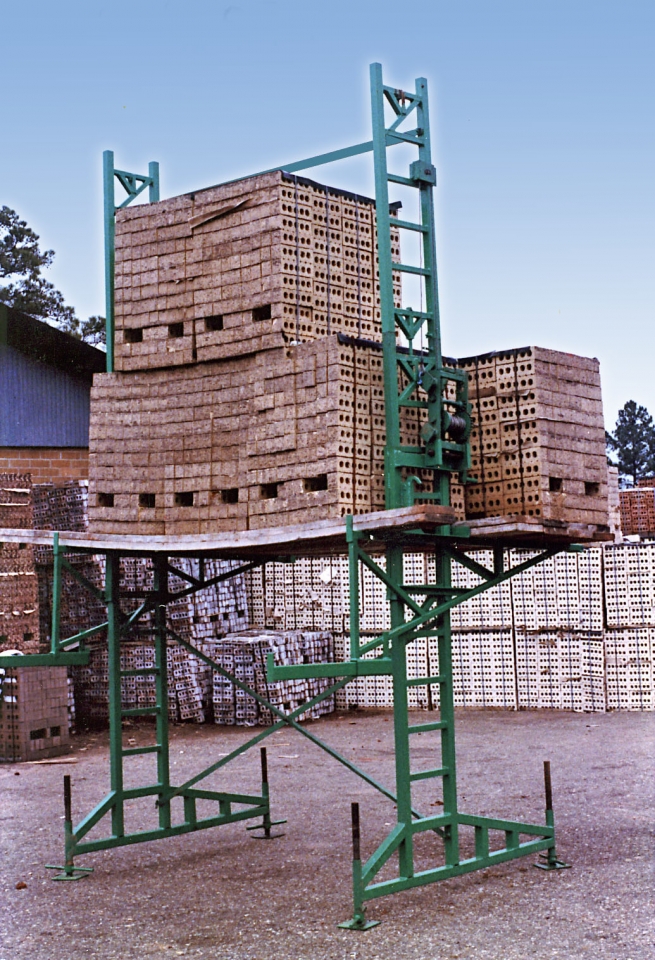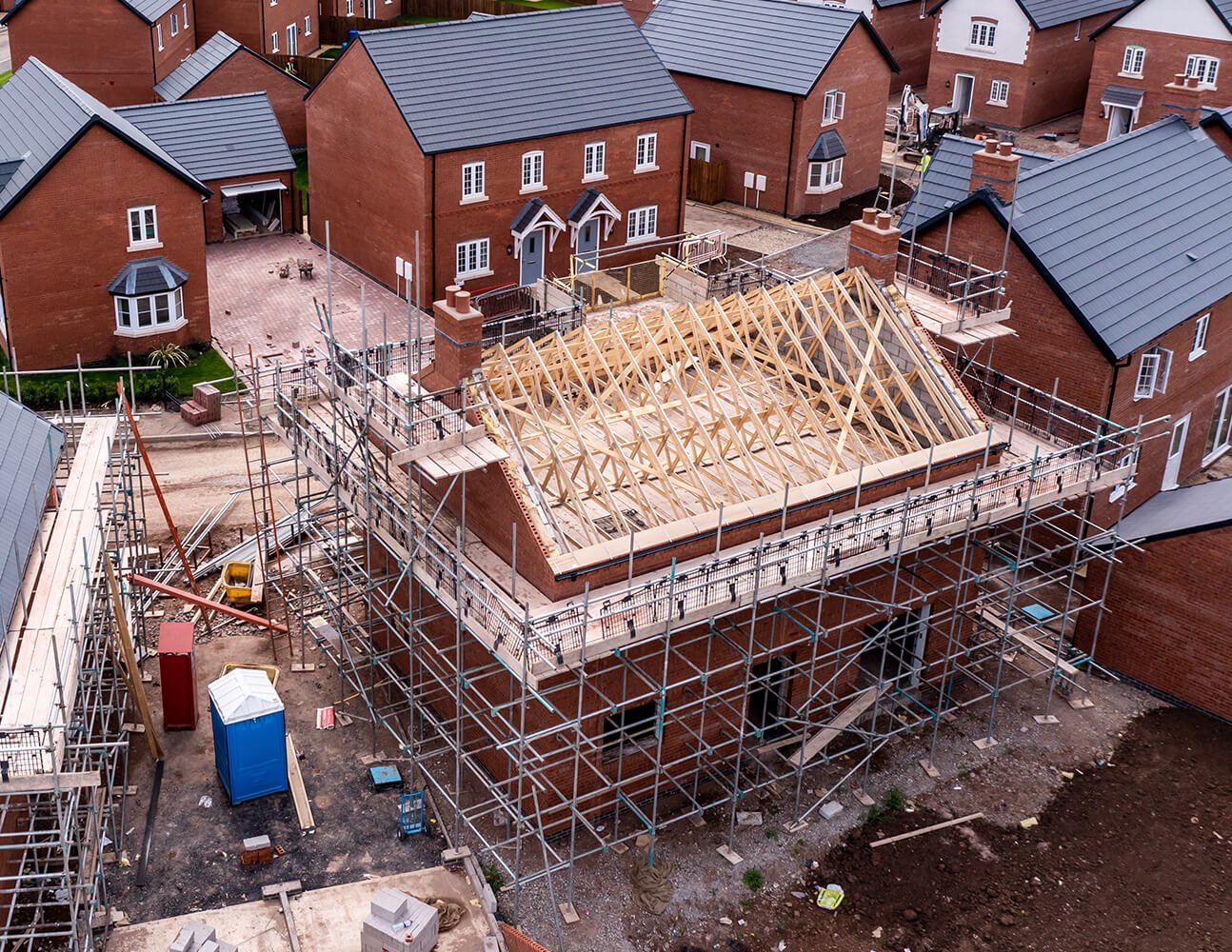Temporary Roof Scaffolding Experts Providing Secure and Reliable Installations
Temporary Roof Scaffolding Experts Providing Secure and Reliable Installations
Blog Article
A Comprehensive Overview to the Vital Attributes of Scaffolding in Modern Building
The landscape of modern-day construction significantly depends on effective scaffolding systems that focus on technology, safety, and efficiency. As projects expand in intricacy, recognizing the important functions of scaffolding becomes essential for making sure employee safety and optimizing task timelines. This guide checks out different kinds of scaffolding, highlights key security attributes, and checks out material advancements that contribute to performance and sustainability. Nonetheless, the ramifications of these components expand far beyond plain construction practices, prompting a more detailed take a look at how they influence overall project success and employee well-being.
Kinds of Scaffolding
Although scaffolding systems can vary widely in layout and application, they normally come under numerous unique categories that accommodate different building and construction demands - Scaffolding. The most typical types include sustained scaffolding, put on hold scaffolding, and rolling scaffolding
Sustained scaffolding contains systems supported by a structure of poles, which offer a raised and stable functioning surface. This kind is usually made use of for jobs that require considerable altitude, such as bricklaying or exterior paint.
Put on hold scaffolding, alternatively, is utilized for jobs requiring access to high elevations, such as cleaning or fixing structure facades. This system hangs from a rooftop or an additional structure, allowing workers to lower or increase the system as required.
Moving scaffolding attributes wheels that permit simple wheelchair throughout a work site. It is specifically helpful for tasks that require frequent relocation, such as indoor job in huge rooms.
Each sort of scaffolding is made with details applications in mind, guaranteeing that building jobs can be brought out effectively and efficiently. Comprehending these groups is crucial for picking the ideal scaffolding system to satisfy both job needs and website conditions.
Key Safety And Security Features
Safety is paramount in scaffolding systems, as the possible dangers related to operating at heights can lead to serious crashes otherwise properly handled. Secret safety attributes are vital to make sure the wellness of employees and the stability of the building site.
Firstly, guardrails are crucial. These obstacles offer a physical safeguard versus drops, considerably reducing the threat of major injuries. Additionally, toe boards are frequently made use of to avoid tools and products from diminishing the scaffold, securing workers below.
An additional important component is the usage of non-slip surfaces on systems. This feature boosts grasp, specifically in unfavorable weather, consequently reducing the likelihood of falls and slips. In addition, accessibility ladders should be safely placed to facilitate safe access and exit from the scaffold.
Routine inspections and maintenance of scaffolding systems are likewise crucial. These inspections ensure that all components are in great problem and working appropriately, attending to any kind of wear or damage promptly.
Last but not least, correct training for all workers associated with scaffolding operations is necessary to guarantee that they recognize security protocols and can identify possible hazards. Scaffolding. Collectively, these functions develop a more secure working setting and dramatically reduce threats related to scaffolding
Product Innovations
Improvements in product science have actually dramatically influenced the scaffolding industry, enhancing both safety and security and performance in contemporary building. The introduction of high-strength steel and aluminum alloys has actually reinvented traditional scaffolding systems.
Furthermore, innovative composite materials, such as fiberglass-reinforced plastics, have actually arised as feasible options. my website These materials are resistant to deterioration and environmental degradation, thus expanding the life expectancy of scaffolding systems, specifically in harsh climate condition. The use of such products contributes to decrease upkeep expenses and guarantees constant performance with time.


Style Factors To Consider
Considering the intricacies of contemporary construction projects, effective scaffolding style is critical to making certain both capability and safety. Design considerations have to include numerous factors, consisting of tons ability, height, and the particular requirements of the building and construction website. Each project presents distinct difficulties, demanding a flexible approach to scaffolding systems that can adapt to differing problems.
Structural honesty is vital; as a result, engineers need to calculate the loads that the scaffolding will certainly support, consisting of employees, materials, and tools. The option of products plays an essential function in making certain the scaffolding can withstand these loads while continuing to be lightweight and long lasting. Additionally, the layout needs to permit simple access and egress, promoting the smooth movement of personnel and products.
Safety functions, such as guardrails and non-slip surface areas, should be included to decrease threats important source of crashes. Furthermore, the format must consider the surrounding environment, including adjacent structures and potential dangers. By addressing these layout considerations, building firms can enhance the effectiveness of scaffolding systems and promote a safer working atmosphere, inevitably adding to the general success of the job.
Maintenance and Evaluations
The effectiveness of scaffolding systems extends past first style and execution; ongoing upkeep and normal inspections are vital to guaranteeing their continued performance and security throughout the period of a job. Normal assessments should be conducted by certified personnel to determine any type of signs of wear, damages, or instability that could jeopardize the stability of the scaffolding.
Upkeep procedures need to include regular checks of structural components, such as slabs, fittings, and frames, making certain that all components remain safe and totally free from rust or various other degeneration. In addition, the functionality of safety click attributes, such as guardrails and toe boards, should be analyzed to ensure compliance with safety and security policies.
Documentation of all evaluations and upkeep tasks is vital for liability and regulative conformity. An organized approach to record-keeping not just help in tracking the problem of the scaffolding yet also supplies essential proof in case of an event.
Eventually, developing a thorough upkeep and inspection timetable will considerably minimize the danger of crashes and boost the overall safety of the building and construction site. By prioritizing these practices, construction supervisors can safeguard employees and copyright the project's integrity.

Final Thought
Finally, the essential features of scaffolding in modern-day building encompass a variety of vital components, including varied types, vital security mechanisms, product technologies, and thoughtful layout considerations. Stressing security via guardrails and non-slip surfaces, along with improvements in materials like high-strength steel, boosts both performance and sustainability. Moreover, regular maintenance and inspections are essential for guaranteeing architectural integrity and security on building and construction sites, inevitably facilitating efficient project execution and advertising the health of employees.
The landscape of modern-day construction progressively counts on reliable scaffolding systems that prioritize performance, innovation, and safety and security.Innovations in material scientific research have actually substantially influenced the scaffolding sector, enhancing both security and effectiveness in contemporary building. Generally, these product technologies not just improve the performance and security of scaffolding systems however additionally line up with the market's push in the direction of sustainability, as several contemporary materials are made to be a lot more ecologically friendly.
Considering the intricacies of contemporary building tasks, efficient scaffolding style is paramount to guaranteeing both capability and security.In conclusion, the important attributes of scaffolding in contemporary building and construction incorporate a variety of crucial elements, consisting of diverse kinds, vital safety and security mechanisms, product advancements, and thoughtful design factors to consider.
Report this page